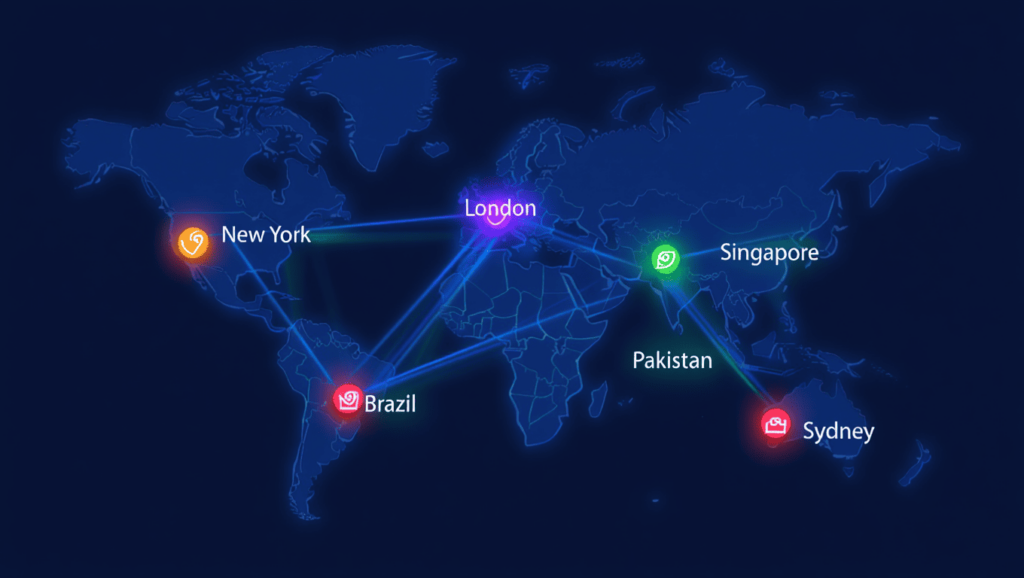 Back to all articles
Back to all articles
Blogs
Working in a Different Time Zone: Tips to Maintain Global Partnerships


Today, the world is increasingly interconnected, and organizations rely on remote teams to meet the diverse needs of their clients worldwide. With this reliability, companies are required to serve their clients around the clock. In this case, their sales and support teams are required to be readily available for finalizing deals and resolving issues at any time.
Yet, working in a different time zone brings several challenges, including miscommunication and frustration among team members. As a result, it is difficult to maintain productivity and global partnerships. With proper timezone management for remote teams, you can ensure that everyone stays aligned and no one feels left out.
This is what this article is all about: tips to maintain global collaboration with your partners while you both work in different time zones.
Recognize Time Zones
Create a shared time zone map so you can check the availability of all team members by
locating their current local time, working hours, and regions. This way, you can identify how ahead or behind a team member is from all the other team members. You can assign project tasks or communicate with them accordingly.
For example, you are working with a diverse team of website designers and developers. You can easily discover their availability and be able to work in your preferred timezone to quickly get the work done within deadlines.
Communicate Overlapping Hours to the Team
Regardless of where they are located, there comes a time when all the team members are online and available at the same time. The availability of all the members at the same time could be for three or four hours, or even more, depending on the region.

Identify this window and communicate it to all the team members. It will help you schedule meetings accordingly to ensure the availability of relevant team members for important tasks. Important activities could be important updates, sensitive discussions, quick meetings, or decision-making.
In the remaining hours, when not all employees are connected, they can focus on their routine tasks that do not need quick deadlines and responses.
Use a Shared Calendar
Not being able to access the local times of your team members might be frustrating, and you might always have to end up checking the time zone map. This is where Google Calendar and Calendly help you as global calendars.
Using such tools, you can easily locate the date and time zone of each team member on the basis of their respective locations. These tools help you prevent confusion and mishaps in scheduling meetings. But these tools do not necessarily offer integration to your workspace. In this case, use tools like Nifty with built-in calendar features and support for time zones.
Shift Meeting Hours
Overlapping hours might not work every time, as not everyone finds them convenient. It is unfair to expect a team to be available early morning or late at night. This is when you adjust meeting hours to tackle difficulties, distribute stress and burden, and reduce the likelihood of burnout.
Above all, shifting meeting hours does not make employees who are unavailable feel ignored when other team members are discussing something important or making decisions. The best practice is to conduct online video meetings with rotations so that employees in all regions are treated fairly and the global partnership is strengthened.
Utilize the Combination of Sync and Async Collaboration
Synchronous collaboration builds a strong connection among team members. Sync collaboration includes:
- Meetings in real-time
- Providing live feedback
- Conducting brainstorming sessions

But with a distributed team, you can not solely depend on such collaboration. It is because of the absence of overlapping hours, the unavailability of key employees at the same time, and your inability to start meetings whenever something important comes up.
This is where you need asynchronous collaboration combined with synchronous collaboration. It helps you collaborate effectively irrespective of time zones and maintain global partnerships. Follow these async communication best practices:
- Use tools like Teams, Slack, or Microsoft Teams to help you leave messages for other team members so that they can respond whenever they are available.
- Use platforms like Notion and Google Docs to create shared documents and leave them for later review to eliminate the requirement of being online at the same time.
- Use pre-recorded videos explaining and updating important things for other members to view whenever it is convenient for them.
Allocate Tasks and Deadlines in Local Times
9 AM for one team member might be 3 PM for another employee. Not keeping track of the time zone difference might result in setting unrealistic and demanding deadlines. This leads to fatigue among the team members, and they are unable to deliver the tasks on time.
To avoid frustrations and late submissions, always look for the local time of the employees you are assigning tasks to. Also, check how much time the task will take. Set realistic deadlines according to the timezone and workload. This practice is best suitable when working with IT team augmentation or IT staff augmentation.
Track Projects Using Tools
Use project management tools like Jira, Nifty, and ClickUp to assign tasks, view documents, stay updated, create reports, and track the progress of priority tasks. You will be able to see
- Which team member is doing what
- When their tasks are due
- Bird’s eye view of how each task contributes to the bigger picture.
These tools prove to be most valuable in technical team augmentation settings, as they ensure strong communication and coordination between in-house staff and external teams. In addition to this, they clarify the practical staff augmentation meaning as they combine your team with external skills and maintain integrated project tracking side by side.
Conclusion
Working in a different time zone does not have to come in the way of the productivity of the employees and global collaboration with them. With the right tips and strategies, as we have discussed above, you can create strong relationships with your team and make project delivery smooth.
Additionally, by utilizing tools like Nifty, Jira, Microsoft Teams, and Google Workspace, you can create realistic deadlines and, efficient workflow for in-house and augmented teams. As a result, you promote flexibility, respect differences, and make sure that every team member feels connected, irrespective of where they are located.
Don't hire us right away
talk to our experts first,
Share your challenges, & then decide if we're the right fit for you! Talk to Us
Partnerships & Recognition
Commitment to excellence






